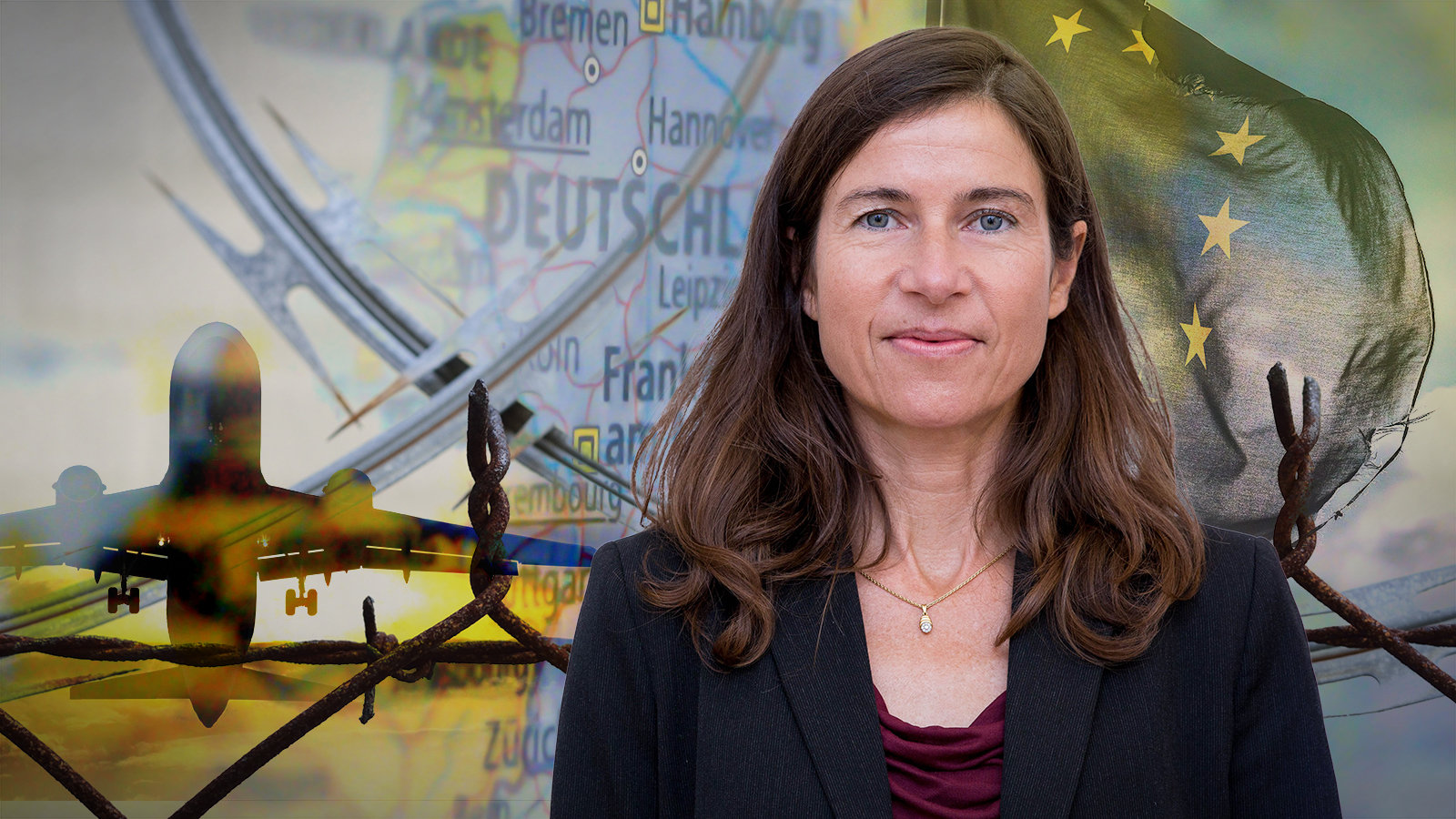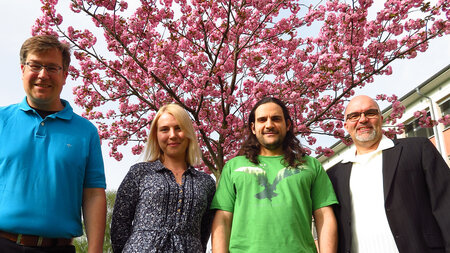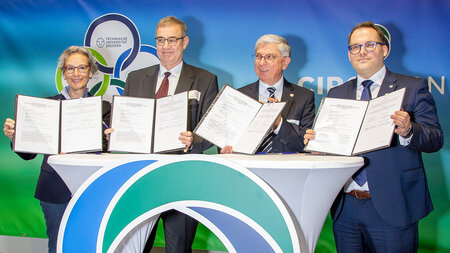“The Local Level Should Be More Involved in Asylum Processes!”
Prof. Dr. Birgit Glorius, Chair of the Professorship of Human Geography with a focus on European migration research, speaks about the completion of the evaluation of the Common European Asylum System
-

Prof. Dr. Birgit Glorius chairs the Professorship of Human Geography at Chemnitz University of Technology, with a focus on European migration research. Photographic: Jacob Müller
The CeasEVAL Project, which is short for “Evaluation of the Common European Asylum System under Pressure and Recommendations for Further Development”, funded by the European Commission in the scope of HORIZON 2020, will end in October 2019. Prof. Dr. Birgit Glorius, head of the research network of 14 universities, research institutes and think tanks, and also Chair of the Professorship of Human Geography, with a focus on European migration research at Chemnitz University of Technology, looks back on this in an interview for “Uni aktuell”.
What objectives did the project have two years ago, as it was launched?
According to the European Commission’s call, a comprehensive evaluation of the Common European Asylum System had to be carried out. This ranged from regulatory patterns at the national and international level, to the actual local practices of receiving asylum seekers and processing their asylum applications. In particular, discrepancies should be identified and analysed between EU refugee reception standards and national legislation and implementation. Based on the results of the research, alternative courses of action for parts of the Common European Asylum System should be developed, and a participatory process with both state and non-state actors should be carried out, so as to assess where reforms might take place.
Was the research network able to achieve these goals?
Yes, we have carried out a comprehensive evaluation of the Common European Asylum System, including detailed country-by-country analyses, and an analysis of European regulations on migration, border security and the implementation of reception and asylum procedures. In total, research was conducted in 16 countries. About 500 interviews with state and non-state actors and about 100 interviews with refugees were carried out and evaluated. So far, more than 40 publications have been produced out of this project, and partial results of the project can be found there. As planned, we developed policy scenarios on the basis of our research results, and we discussed them with various stakeholders during group discussions. This was a very intense process.
What are the primary results?
As a result of the sharp increase in the number of arriving asylum seekers in Europe, we have seen an increased centralisation of decision-making processes – meaning, a lot has been anchored at the national level, in order to react quickly to the changes. As reasonable as that was on one hand, it caused a great deal of unrest on the municipal level across Europe. While the municipalities felt they had been left out of the decision-making processes, the accommodation of asylum seekers directly affected them. A second finding was that despite the efforts to harmonise the asylum system across Europe, the heterogeneity of state asylum systems increased, rather than decreased. One reason for this is the development of ad-hoc solutions in view of the increase in the number of refugees at that time, and another is the increased number of actors who played a role in the admission process on site and who had to be included in the control processes. As a positive outcome of this development, we were able to see very innovative developments in many places, as a result of new cooperation between state and non-state actors and civil society as a whole. Another important finding concerned public opinion on asylum migration. In all countries, we could see more or less strong politicisation processes. In many cases, the debates on asylum migration were not fact-based, and in many countries the topic was exploited for completely different political purposes, to deliberately fuel public outrage. This is highly problematic, since many resulting policy approaches can be described as symbolic policies that responded to irrational fears, rather than approaching difficult situations proactively and objectively. This politicisation process has gone so far in many cases, that public confidence in European policies and the European project as a whole has been lost.
How do you rate the Common European Asylum System post-evaluation?
With regard to the functionality of the Common European Asylum System, we distinguish between technical and political components. Technically, the system has developed a solid standard for receiving asylum seekers and implementing asylum procedures, and this stayed functional even during times of stress. However, looking at it politically, it showed how volatile the system is, and what level of serious influences the political realm can have on the architecture of the Common European Asylum System and the EU as a whole.
Were there any surprises or hurdles while implementing this project?
Yes indeed. Surprising, but also pleasing, I found that our extensive work plan could actually be kept on track within its relatively short time frame and with the large number of actors involved. At times, we also had to cope with problems in the area of research in the different countries, for example, access to interview partners. Due to the strong politicisation of the topic, many actors have become very cautious about participating in research projects like this. In addition, changes of government, as in Turkey, or tightening of laws surrounding non-governmental organisation, as in Hungary, didn’t necessarily help the cause. But in the end, all planned steps could be realised, and we are pleased with that.
What policy recommendations can you give, based on the project results?
I would like to summarise this in three main points. First, the local level should be more involved in asylum processes! There are cities across Europe, both bigger and smaller, that want to play a stronger role in receiving and integrating asylum seekers. There is a lot of frustration there at the moment, because of their lack of influence on the process, but also because of a lack of resources. Direct budgeting from EU funding sources could have a major effect here, as it would increase the potential for social integration, and thus also improve public support for the reception of asylum seekers. Second, political actors at all levels should strive for more transparent communication and responsible political approaches, in order to achieve a more fact-based policy and thus contribute to a de-escalation of public discourse! Third, if there is to be any reform of the Common European Asylum System, EU Member States first need a common vision, preferably in the spirit of mutual solidarity as a basic principle of the European Union.
And how likely is this implementation, from your point of view?
There is increasing sentiment at the EU level for greater involvement of the local level, and the provisioning of an EU budget directed towards local funding should be feasible. I would be more sceptical about the de-escalisation of discourses and the development of a common vision. This may well be determined by the role model function of prominent European players such as France or Germany, whether or not the rest of Europe will also move along. The recent initiatives regarding a division of responsibility in receiving refugees rescued from distress is certainly a good sign.
Thank you for the interview, and good luck with your further research at Chemnitz University of Technology.
(This interview was conducted by Mario Steinebach, Head of the Press Office and Crossmedia Communications)
Note: The results of the “Evaluation of the Common European Asylum System under Pressure and Recommendations for Further Development” Project (CeasEVAL) will be presented on 1 and 2 October 2019 at a conference at Chemnitz University of Technology, named “Refuge Europe – a question of solidarity?”
(Translation: Jeffrey Karnitz)
Mario Steinebach
02.10.2019





